This 20-Year-Old Transgender Man Wants to Change Bodybuilding Forever
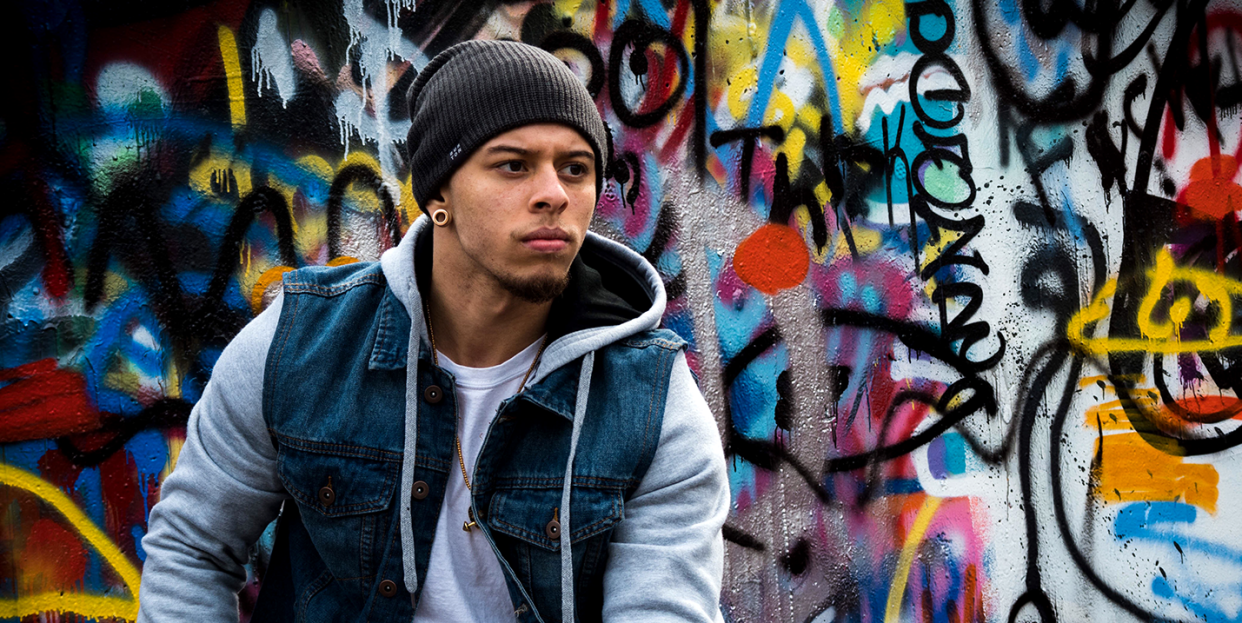
Like most other bodybuilders jumping into yet another day of repetitive bench pressing and tricep curls, Ajay Holbrook needs music to set the mood. He connects his phone to the speaker blasting hip-hop through ATX Gym in Round Rock, Texas, a small gym off I-35 outside Austin proper. But he still doesn’t have the spark he needs to slog through a sixth straight day of pumping iron.
“I gotta find a good song,” he says, shuffling through his playlist till he finally stops. The opening bars of Lil Wayne’s “A Milli” echo through the small garage-like gym. Then he pulls his torso under the barbell and gets to work, rapidly pumping the weight through the air and mouthing the lyrics.

When Lil Wayne dropped this single from Tha Carter III in February of 2008, Holbrook was a tiny 10-year-old with silky black hair that flowed down past his waist. He was considered, by everyone in the world except the only person to whom this really mattered, a girl.
In less than three years, the 145-pound, 20-year-old Holbrook has completely remade his body, thanks to testosterone, massive amounts of protein, and a punishing gym routine. He hates leg day. His favorite cheat meal is In-N-Out (He says he “goes HAM” on a No. 3 combo with a strawberry shake). His Instagram feed is an amalgam of unpaid underwear ads, cheery #goodvibes motivational speak, and tough-guy bromides (“lions don’t concern themselves with the opinion of sheep.”) He has a high-and-tight fade haircut and a forearm octopus tattoo; today, he’s wearing gold plug earrings and a black Gold’s Gym tank that fails to hide his ever-increasing mass of deltoids and biceps.
These are Holbrook's main goals, listed in ascending order: he wants to weigh 200 pounds. He wants to make it out of small-town central Texas. And, most importantly, he wants to stand on the Mr. Olympia stage, a tall order even for decades-long powerlifters.
Forget, for a moment, that no trans man has ever competed in a major competition in the notoriously conservative, aggressively macho bodybuilding world, and forget that Holbrook has only been working out for just a few years. “Nothing is ever impossible until it’s done,” Holbrook says. “That’s where I’m at. I’m going to make it possible.”
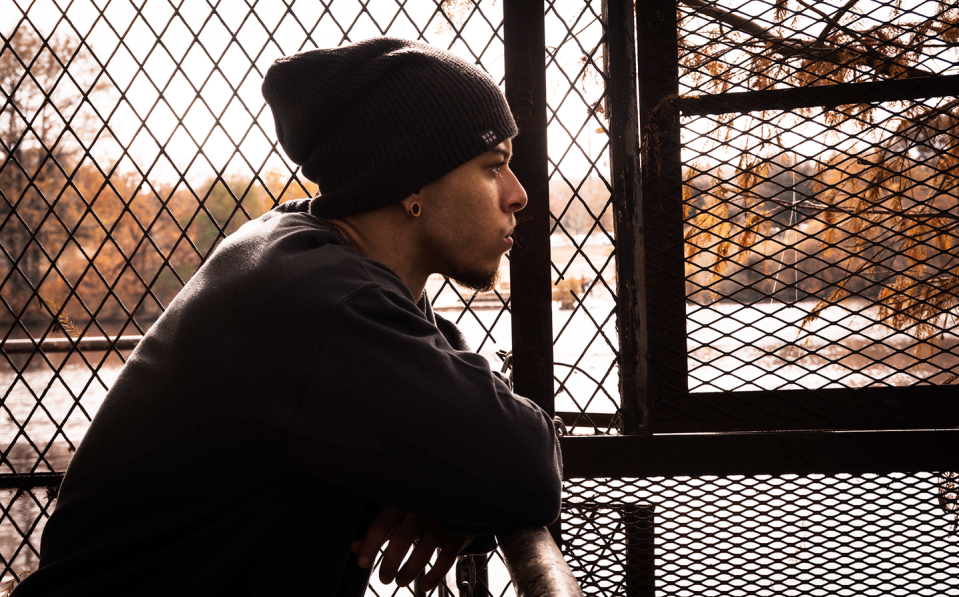
Holbrook officially came out as trans when he was 13, but he knew something was different at three or four. His mother, Holly, says Ajay hated having his hair done and would pull his dresses off because he couldn’t stand wearing them. At his grandmother’s pool, in rural Hempstead, Texas, he once tried swimming with his shirt off, because that’s what the other boys did.
“She yelped,” Holbrook says. “She grabbed me, and she was like, ‘What are you doing, you’re a girl!’ I looked at her like, ‘What are you talking about?’”
When he played video games like the Sims and Grand Theft Auto, he would create his avatar as a ripped man with facial hair and tattoos. At first, Holly thought this was an homage to Holbrook’s father, who left the family when he was small. “He created himself to look like his dad,” Holly told me years later. “I thought it was his way of having [him around].”
Then, in middle school, Holbrook began cutting his hair - an inch here, an inch there - so his mother wouldn’t catch on. One day, he was at his grandmother’s house when he "threw everything down and literally typed in, ‘Why do I feel like a boy trapped in a girl’s body?’ and the word ‘transgender’ just lit up my screen,” Holbrook says. “It hit me like a fricking truck.” He printed out a 30-page article on being transgender and called his mother. “I know what I am,” he said. When he returned, he gave her the stack of papers. She gave him her blessing.
“It finally made sense,” she says. “Whatever made him happy, I would have been there [for him].”
Although Holly was accepting of her son's identity, the first few years were rocky for the family. “I can’t tell you how many times I left the house when he was younger, thinking I would come home and he’d be dead,” Holly says. “It was six extremely hard years.”
When he was a senior in high school, Ajay started taking testosterone as part of hormone replacement therapy (HRT). Transmasculine people (i.e. people who are assigned female at birth, but identify and present as more masculine) who take testosterone undergo a significant amount of physical changes, including a decrease in chest size, fat loss in the hips and thighs, an increase in muscle definition in the arms and legs, an angular formation of the face, and thickening of the vocal cords, which deepens the voice.
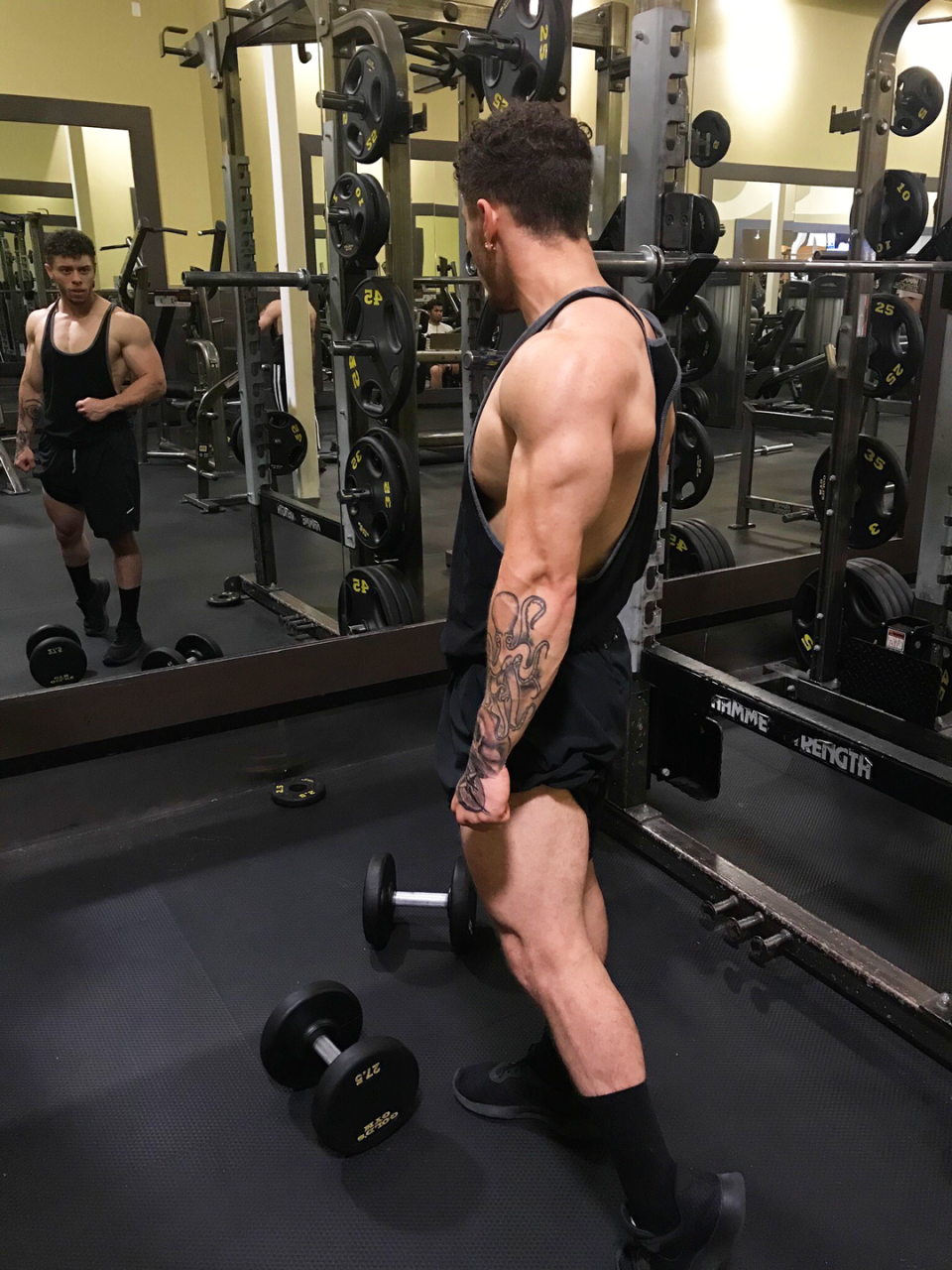
For the first time, Ajay felt like his body aligned with his identity, the version of himself he always saw when he closed his eyes. “I saw muscles, I saw tattoos,” Holbrook says. He started documenting his fitness journey on Instagram and YouTube when he was 18. At first, he thought his Instagram would be viewed as a typical fitness transformation account. But as he quickly amassed a following, he realized his posts carried additional importance: They were serving as inspiration for teenagers looking to transition.
For the most part, Ajay's family was supportive. His mother Holly's former husband, a bodybuilder who had at that point moved in with the family, was not. “He made it his life’s goal to prove to Ajay that he would never be a guy,” Holly says.
One day, Ajay says, his stepfather exploded. He started punching Ajay in the stomach, and pushed him so hard that he fell backward onto a glass table. “He beat the absolute shit out of me,” Holbrook says.
Wounded and angry in his room after the fight, Holbrook decided he had to get big enough to be able to defend himself. So he started lifting. Pretty soon, his shoulders started to broaden. His abs tightened. He started packing the pounds on his slim, then-97-pound frame. “Within the first three months, I started seeing results, and I got hooked," he recalls.
Six months after Holbrook started working out, he stood up to his stepfather for the first time. “I felt strong," he recalls. "I stuck my chest out to him, and I said, ‘You’re not going to touch me.’ And he just walked away. That was it.”

At the end of 2017, a brief story about Ajay appeared on the website for the Daily Mail. It was then shared to Reddit's r/bodybuilding, a subreddit with nearly 468,000 subscribers, as well as bodybuilding websites like Generation Iron. Some commenters wished Holbrook luck; others called for him to be institutionalized in a mental health facility. And many asked a similar question to the one posted in a thread on r/bodybuilding: Should trans bodybuilders like Holbrook be allowed to compete alongside cisgender ones?
The question is not without precedent. In recent years, many transgender bodybuilders have garnered mainstream media coverage, from former Marine Janae Kroc to bodybuilder and trainer Shawn Stinson, who won the first all- Female-to-Male Body Building Competition in 2014.
But it’s unclear what the protocol is for transgender bodybuilders in mainstream competitions. Gary Udit is a promoter for events hosted by the International Federation of Bodybuilding and Fitness (IFBB), which hosts the annual competition that awards the Mr. Olympia title, and the National Physique Committee (NPC), the largest amateur bodybuilding competition organization in the United States.
In an email to MensHealth.com, Udit said that transgender people have been allowed to compete along cisgender bodybuilders at IFBB events, and then directed us to the National Physique Committee (NPC) national office for further questions about organization policy. Official representatives for the NPC and IFBB didn’t return multiple requests for comment.

Some people believe that bodybuilders who have undergone HRT would have a competitive advantage. “A lot of people think that if you get on hormone replacement therapy, that they’re like steroids, and they’ll make you big and muscular,” says Aydian Dowling, a 30-year-old transgender bodybuilder, coach, and motivational speaker from Oregon.
In fact, the 2018 documentary Man Made, which follows four bodybuilders as they prepare for the trans-only bodybuilding competition Trans FitCon, features a scene where bodybuilder Mason Caminiti is disqualified from a competition for this reason.
“There have been situations with other guys who find out they lost a competition to a trans guy and it does not inspire the best reaction," Man Made director T Cooper told Mother Jones in April 2018. "Some of that can lead to violence."
Unlike steroids, however, HRT is an FDA-approved treatment to raise men's levels of testosterone, a naturally occurring hormone. "There is a real lack of understanding: It’s not cheating, no one is pulling wool over anyone’s eyes," Cooper told Mother Jones. "No trans guy is gonna have more naturally occurring testosterone in their body than any dude they’re competing against - you know, there is no doping.”
Marcus Baker, 37, a bodybuilder who won Men's Bodybuilding and Classic Physique at the 2016 NPC Natural Suncoast Classic, agrees that HRT would not put transgender competitors at an advantage. “There are already unknown levels of illicit hormone treatment and performance-enhancing drugs in use among cis competitors, plus natural variations in biology and ability,” Baker says.
In fact, Baker adds, "I think it could be harder for [transgender] competitors, who may be born with proportions and physiology further from what the judges are looking for than most.”
Indeed, many transmasculine bodybuilders have to work out differently than cis competitors to achieve their desired results, says Dowling. For him and for many of his transgender clients, for instance, obtaining the customary bodybuilding v-taper is more difficult than it would be for cisgender men.
“[My] hips are wider than a [cisgender man's] would be,” he says. “I try to focus on really broadening the upper body, and to not over-thicken our mid-waists to create this illusion. I have to train my lats and shoulders a little extra, and be slightly disproportionate, in a way. But to the eye, aesthetically, it’s very much in-proportion.”
Ultimately, bodybuilders say their world is the closest thing to a meritocracy that you can get. “A win still boils down to the mental discipline you put in to stick to your meals and training for the months up to the show,” says Baker. But the fact that transgender bodybuilders more often than not exist in a separate universe from cisgender competitors certainly throws this into question.
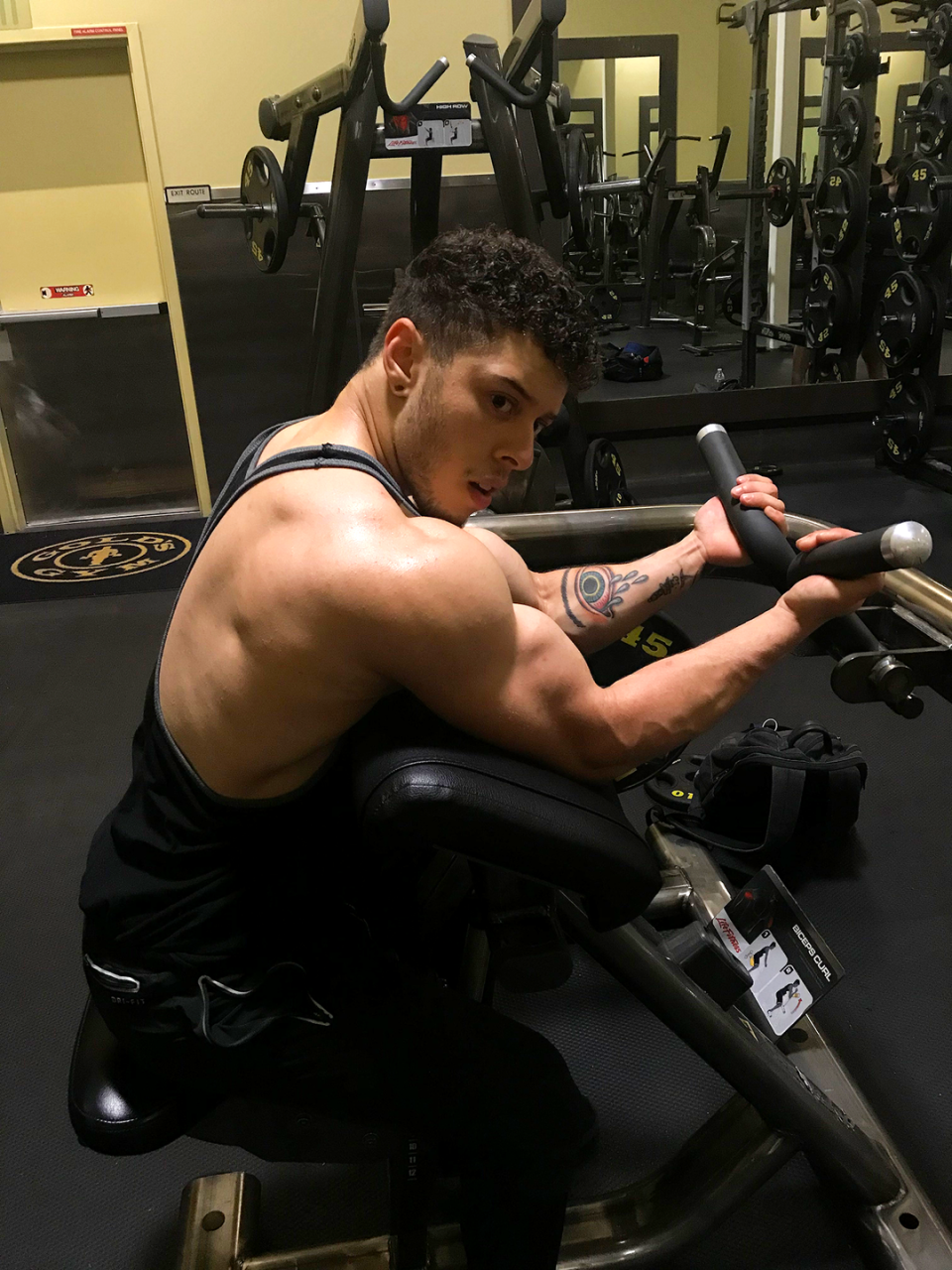
Last year, Holbrook started prepping for a small bodybuilding competition for trans bodybuilders at FTM Fitness Conference, a transgender bodybuilding competition in Atlanta. But he ultimately pulled out. He doesn't want to be known strictly as a trans bodybuilder, and he is adamant about wanting to compete against cis men.
“I had people pushing me, [saying], ‘Oh, you can do it,'" he says. "[But] realistically, if I step on stage, it’s not just to say I did it. I want to make a mark.”
For now, Holbrook is focusing on further growing his presence on Instagram, where he has become something like a mentor to many of his followers. Although he is grateful to inhabit that role, he says it’s stressful. He has to be careful in how he projects his image to his followers, many of whom ask him the same questions about masculinity that he’s been asking himself for almost 20 years.
“Some ask, ‘If I get on T [testosterone], am I gonna look like you?’ Holbrook says. “I'm tackling that. If that’s all they are seeing, they'll think that's what’ll make them valid.”
This is a justifiable concern, says Joie Adam Deritis, LMSW, a social worker who specializes in working with trans and gender non-conforming people. Deritis is a training coordinator for the Trevor Project, a suicide prevention and crisis intervention lifeline for LGBTQ young people
"Transgender people are so vastly different from one another, and people experience and express their gender in so many different ways," Deritis says. "There is no right way to express one's own gender, or to be masculine or feminine, and sometimes rigid gender expectations can cause a lot of distress for transgender people."
For this reason, Holbrook says, he tries not to exclusively “focus on the physical part of what it means to be a man” (though of course, just by virtue of posting Arnold-esque poses that highlight his rippling abs, he unquestionably does). He tells all of his followers the same thing: just because he has made incredible progress on his physique doesn’t mean that his body makes him any more of a man.
"This community is fragile, and I try my best to instill strength into them," Holbrook says. "And if being a man means [physical] strength to you, then that's what it should be.”
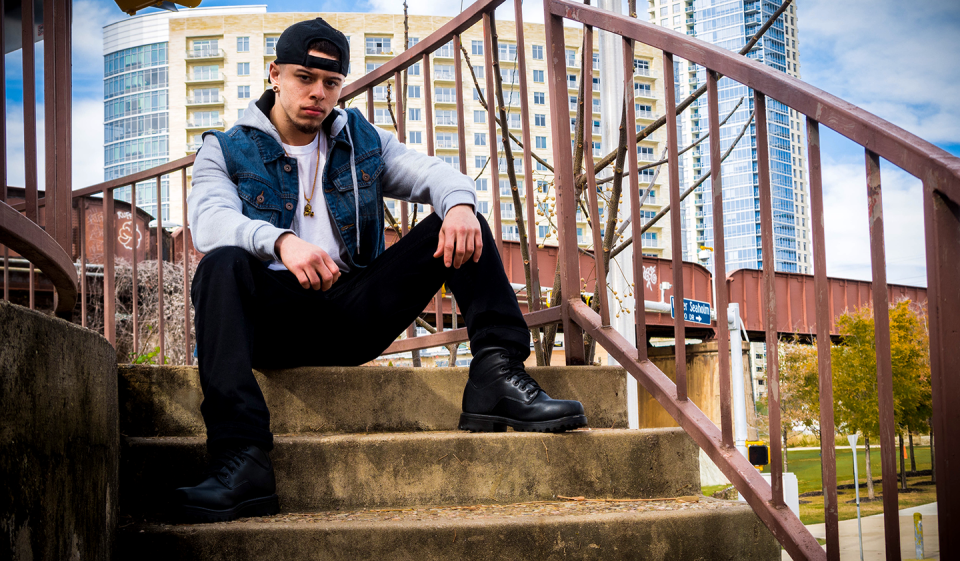
Last June, Holbrook left his job at a local cryotherapy spa and moved to Los Angeles to pursue what he describes as a nebulous mashup of entertainment careers: bodybuilding, acting, modeling, maybe some dancing. He’s going to keep working out six (or seven) days a week and shoveling eggs down his throat until he’s enormous enough to compete with veterans like Kai Greene, or the most recent Mr. Olympia winner, Shawn Rhoden.
He knows he's not quite there yet. But he's equally certain he'll get there someday.
“By the time I step up there and I look like that … what are they going to say?” Holbrook says. “At that point, they are going to have to respect me.”
Joie Adam Deritis contributed edits to this piece.
('You Might Also Like',)

